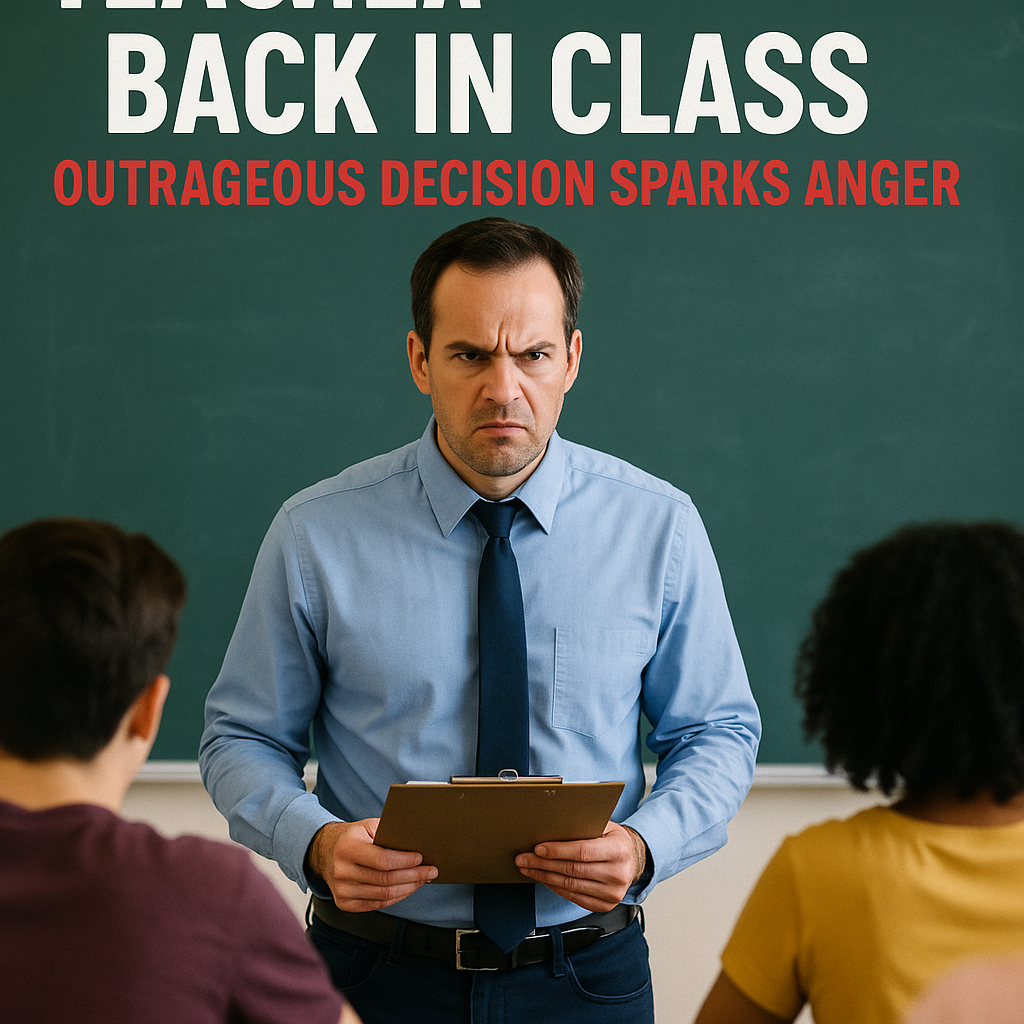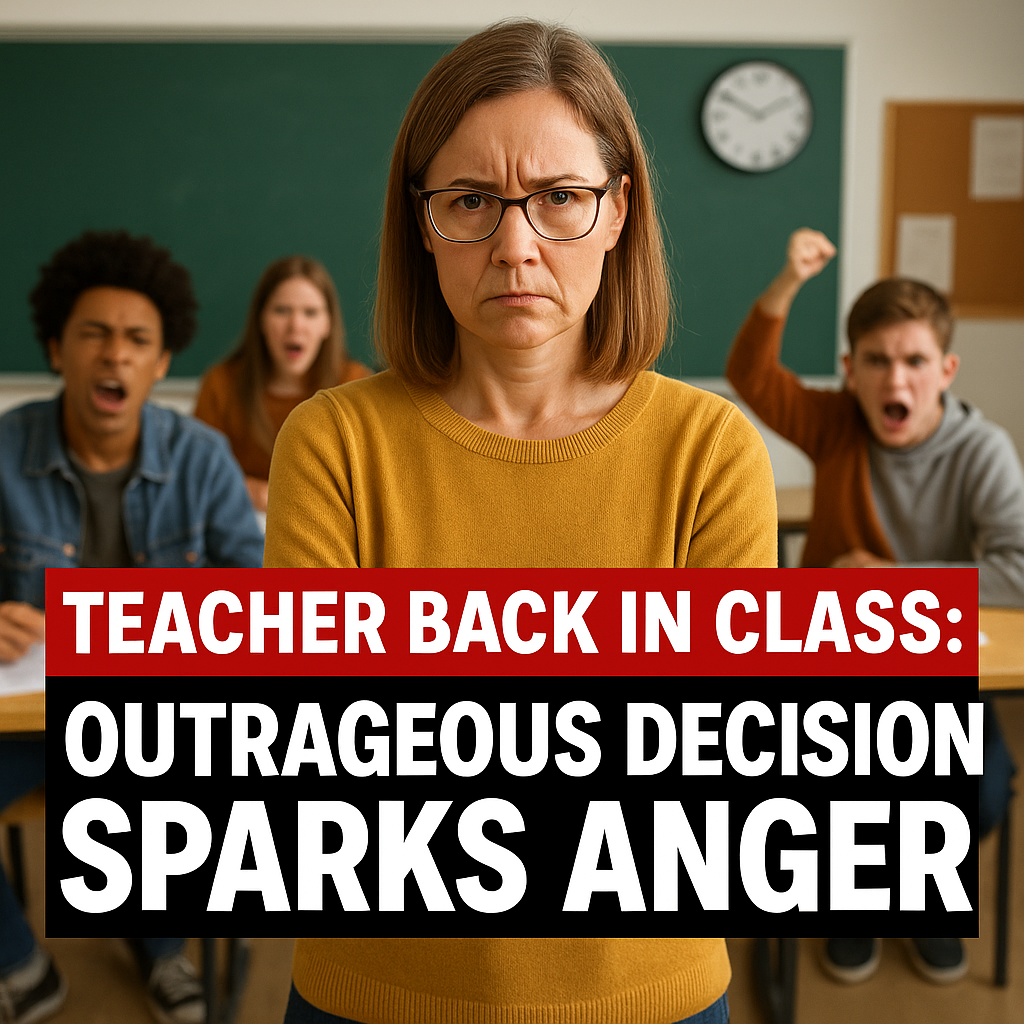Teacher Back in Class: Outrageous Decision Sparks Anger
Teacher Back in Class: Outrageous Decision Sparks Anger
The decision to reinstate a teacher who had previously assaulted a student has ignited a firestorm of outrage among parents and community members. Across various platforms, the news of this teacher’s return to the classroom has raised significant questions about accountability, safety, and the implications for educational institutions.
The Incident and its Aftermath

The controversy stems from an incident last year when a teacher was caught on camera hitting a child, an event that shocked the local community. After receiving a suspension and participating in a review process, the school administration made the controversial decision to allow the teacher to return to the classroom. It’s a decision that has left many puzzled and angered.
According to a report from 8 News Now, a local family expressed their disbelief at the school district’s handling of the situation. “They could’ve put him in a different school,” a parent stated, emphasizing that the safety and well-being of students should be the top priority. This sentiment resonates with many outraged constituents, who have taken to social media to voice their concerns and call for better protections for vulnerable students.
Diverse Reactions from Parents and Officials
The reactions to the decision have been decidedly mixed. Many parents are echoing the same sentiments of fear and frustration, arguing that allowing the teacher to return could set a dangerous precedent. They believe that reinstating someone who has displayed such behavior undermines efforts to create safe learning environments. Communities are rallying, with numerous calls for protests and petitions aimed at overturning this decision.
On the other hand, some local educational officials argue that the teacher has gone through necessary rehabilitation and training. They assert that the path to redemption should be available, especially if the individual has shown remorse and a commitment to change. According to sources from the Review Journal, some experts suggest that this situation highlights a broader issue within the educational system: the need for more comprehensive training and support for teachers, particularly in handling challenging classroom situations without resorting to physical escalation.
Weighing the Evidence: Accountability vs. Forgiveness
Balancing the need for accountability with the principle of forgiveness presents a complex moral landscape. On one hand, critics of the reinstatement argue that reinstating the teacher might diminish trust in the educational system. The public’s demand for consequences in the face of unacceptable behavior underscores a critical need for decisive action in order to protect students.
Conversely, supporters of the teacher’s return raise valid points about rehabilitation and second chances. They contend that a teacher who has shown genuine remorse and undergone adequate training can make a positive impact moving forward. Such perspectives invite a deeper conversation on how institutions handle misconduct, urging a nuanced policy that seeks to protect students while also recognizing the potential for reform.
The Broader Implications for Schools
This situation is not merely a local controversy; it represents a microcosm of challenges faced by educational authorities nationwide. Many districts grapple with similar dilemmas, often balancing the need to foster a supportive work environment for educators while ensuring the safety of students.
As communities across the country continue to debate such issues, educational institutions may need to reassess their policies on teacher misconduct. Transparent communication, along with accountability measures, is essential. Clear policies regarding the handling of such incidents and a commitment to involving parents in decision-making processes could alleviate some of the fears expressed by concerned stakeholders.
A Call for Action
The uproar surrounding this decision should serve as a catalyst for discussions on how schools manage safety and uphold standards of behavior among educators. Advocacy for increased oversight, regular training, and transparent processes could enhance trust in educational institutions, ensuring that they prioritize student welfare alongside professional rehabilitation efforts.
As the debate continues, it’s crucial for community members, parents, and educational policymakers to engage in constructive dialogue. Only through understanding differing perspectives and creating collective solutions can we hope to navigate this challenging terrain effectively.
In conclusion, while the decision to allow the teacher back in class has sparked outrage, it simultaneously opens the door to essential discussions on accountability, rehabilitation, and the complexities of educational ethics. As communities voice their concerns, the hope remains that these discussions will lead to stronger safeguards for students and a more robust approach to teacher behavior standards in the future.






